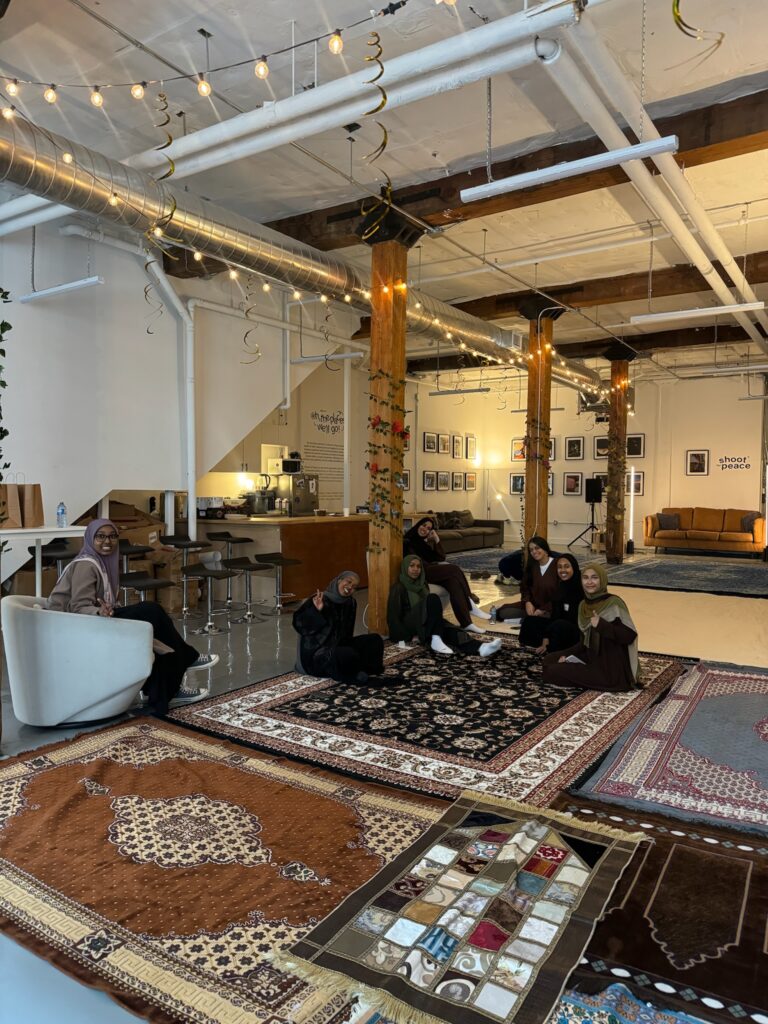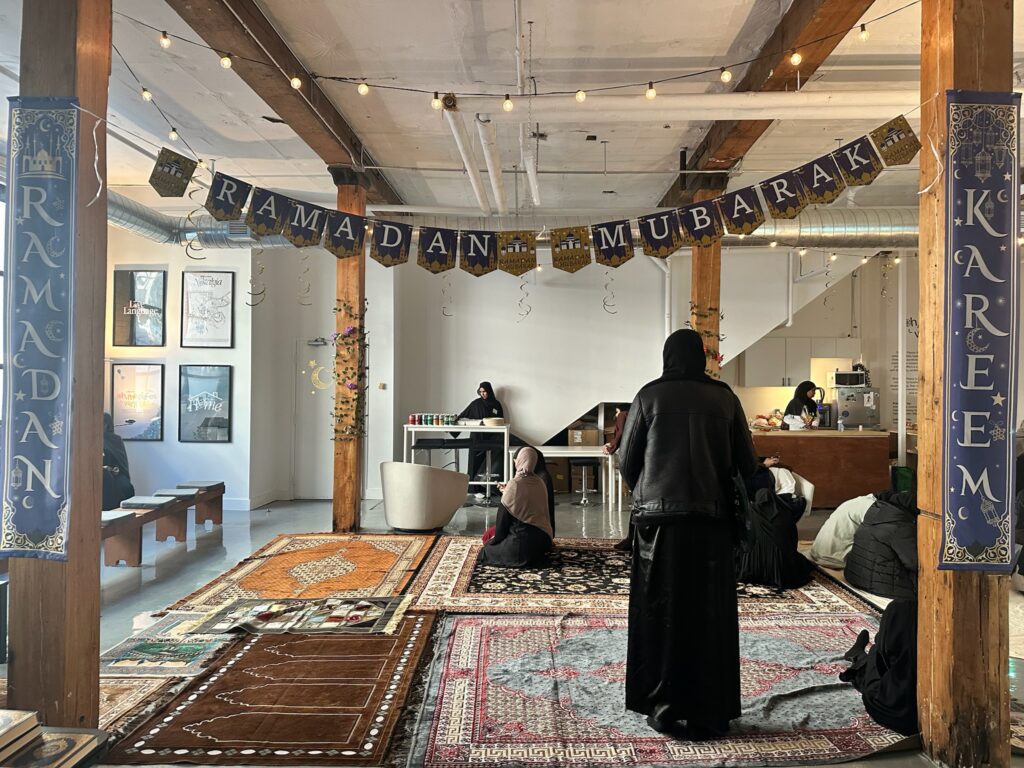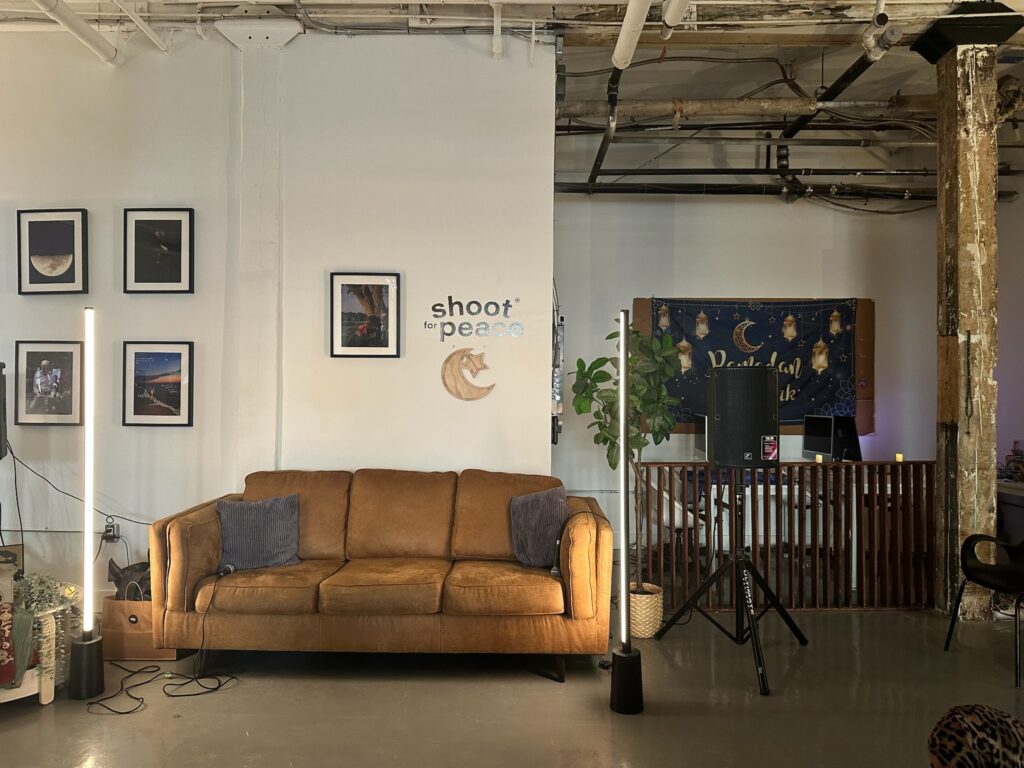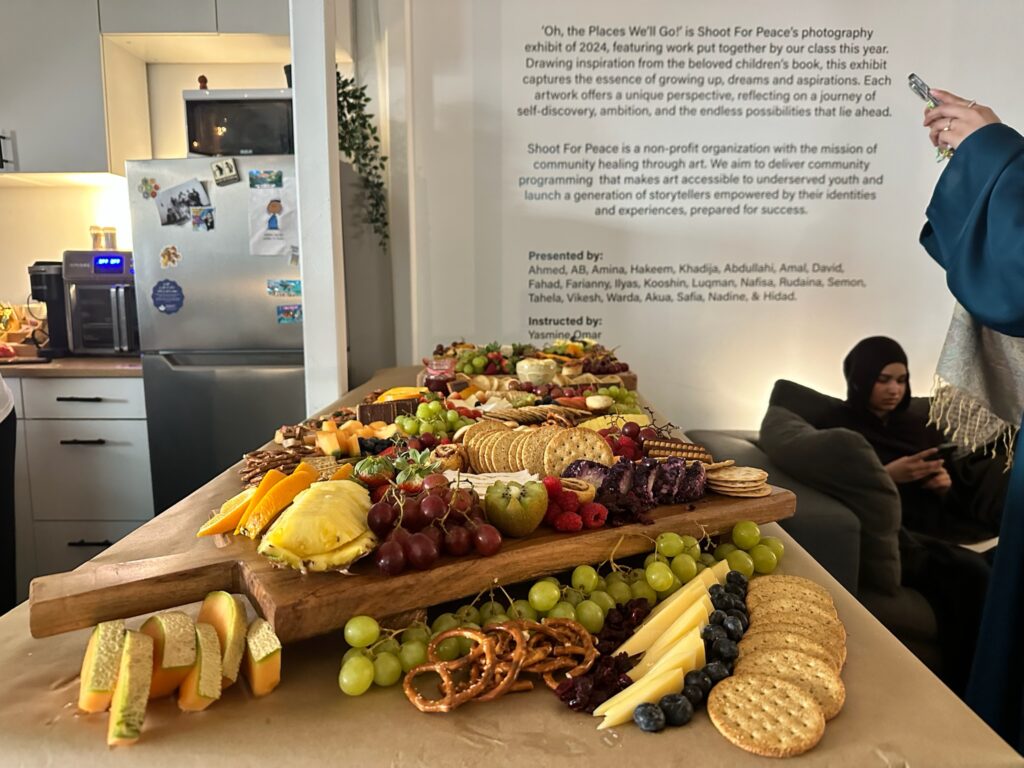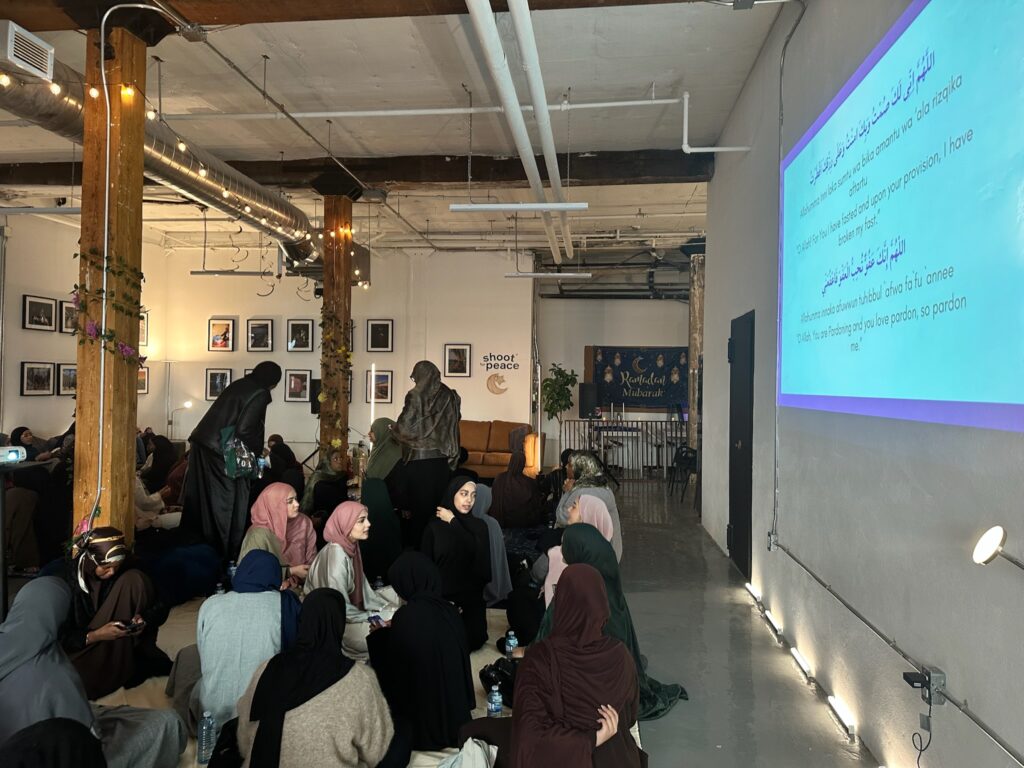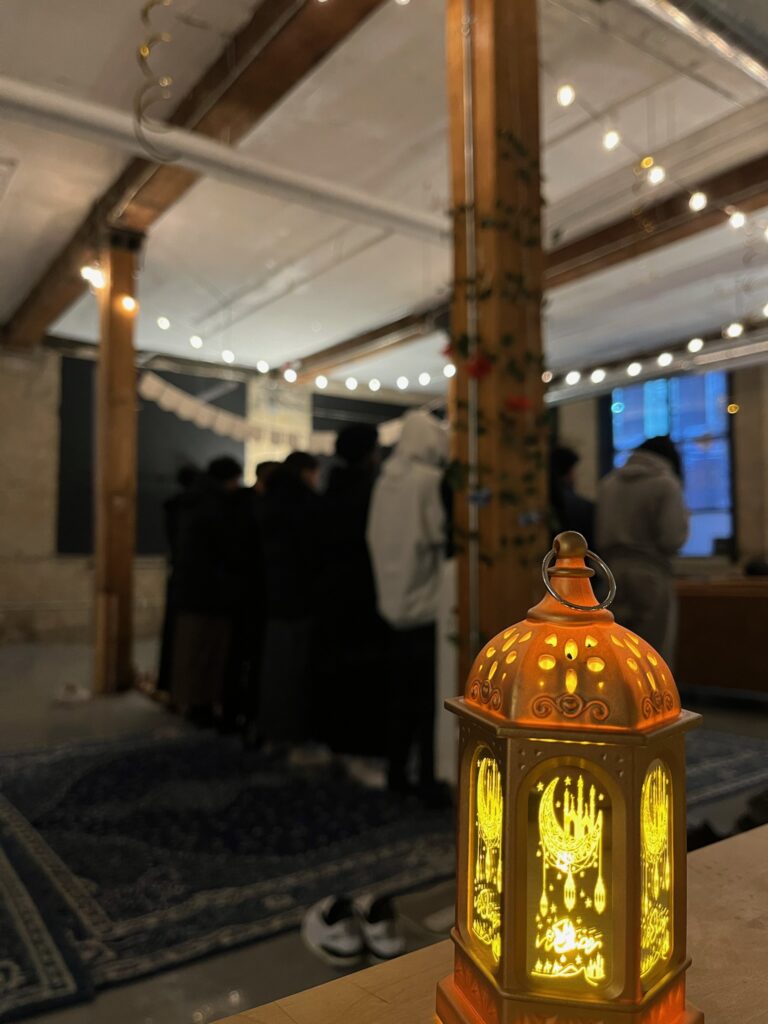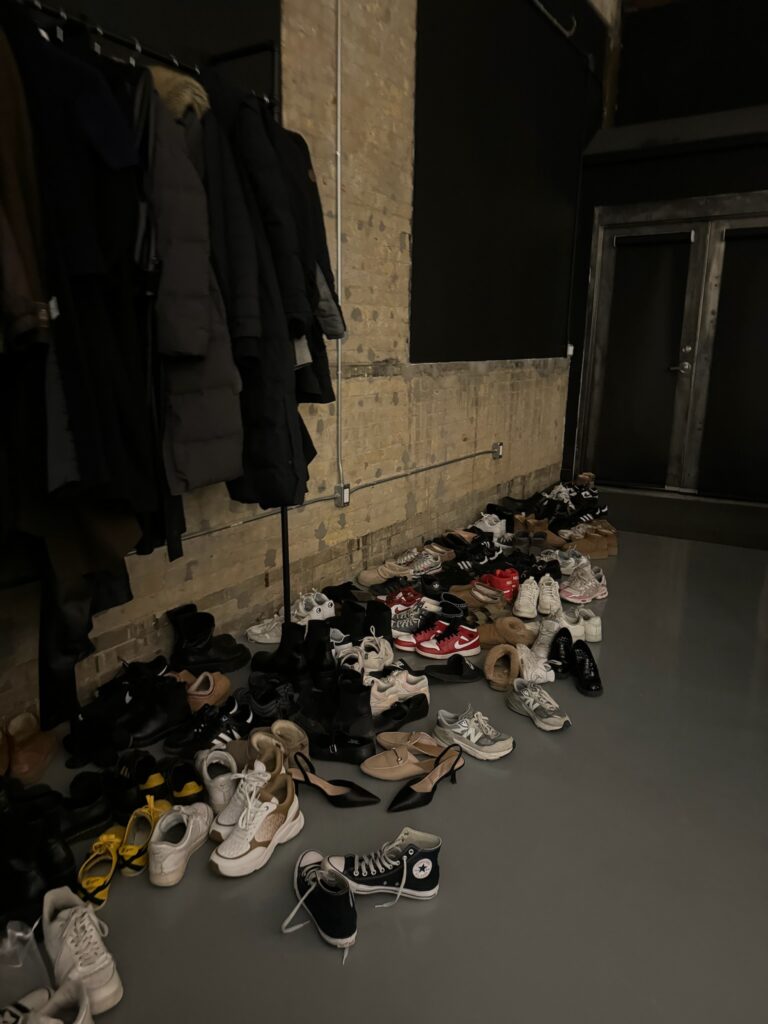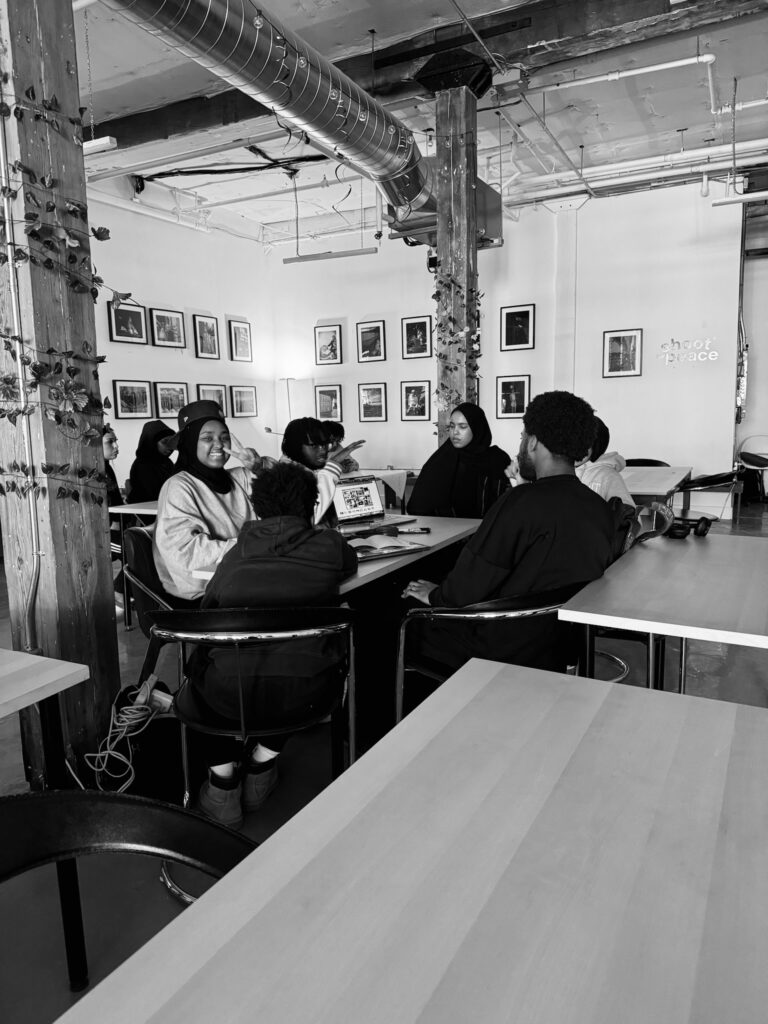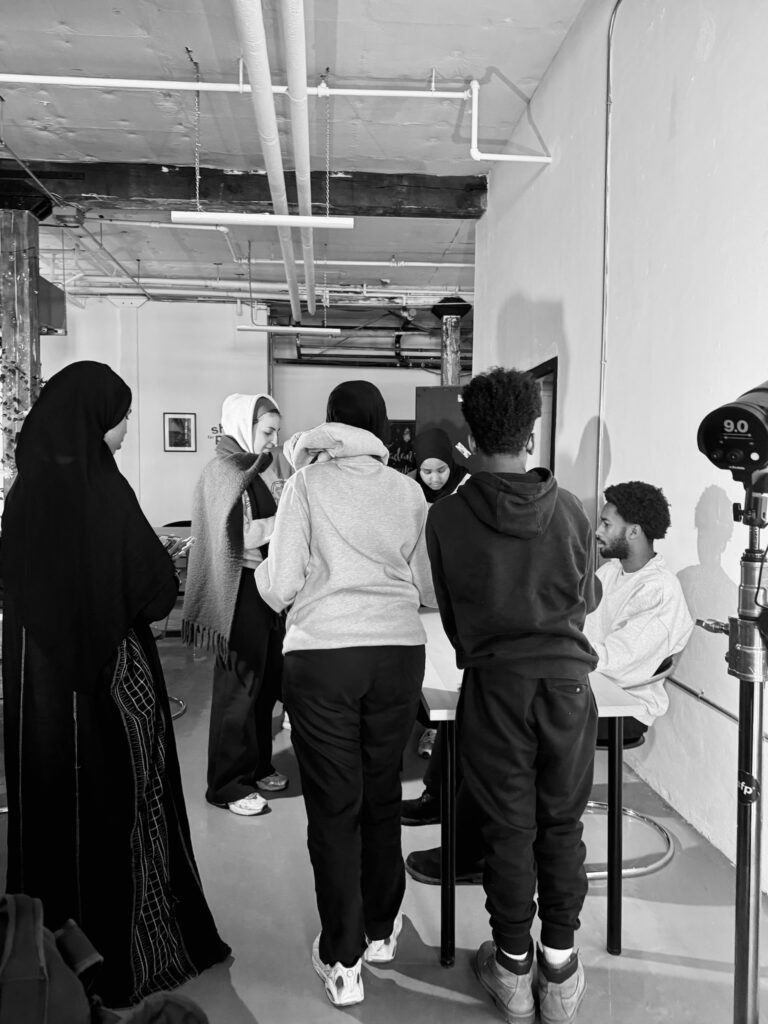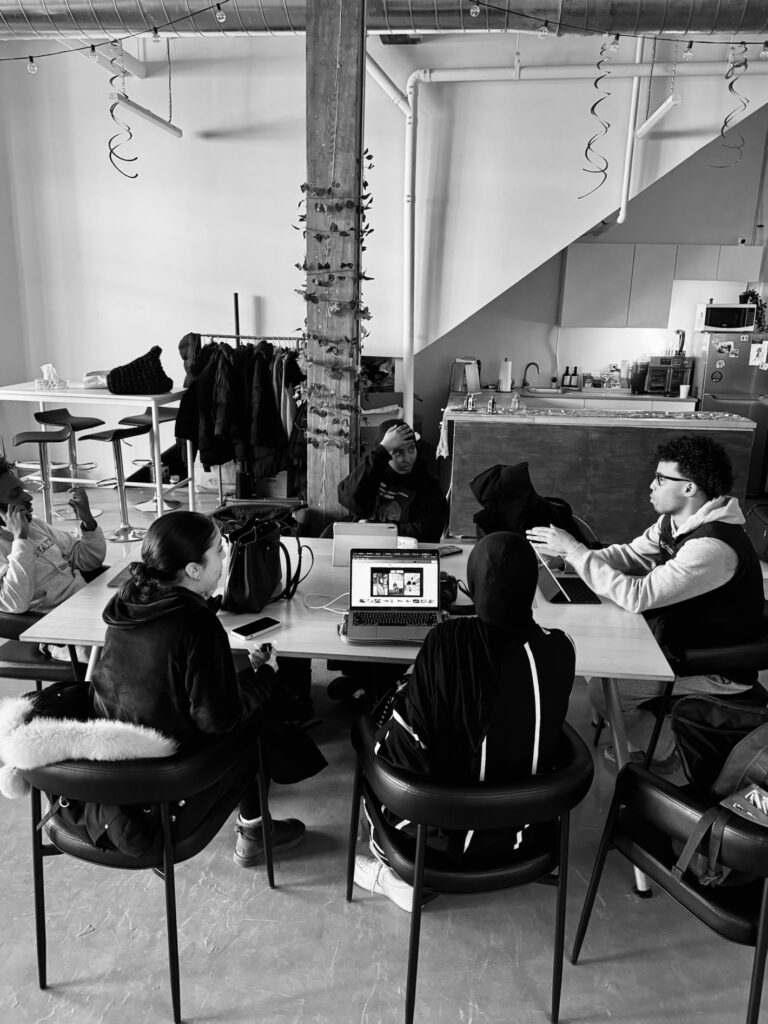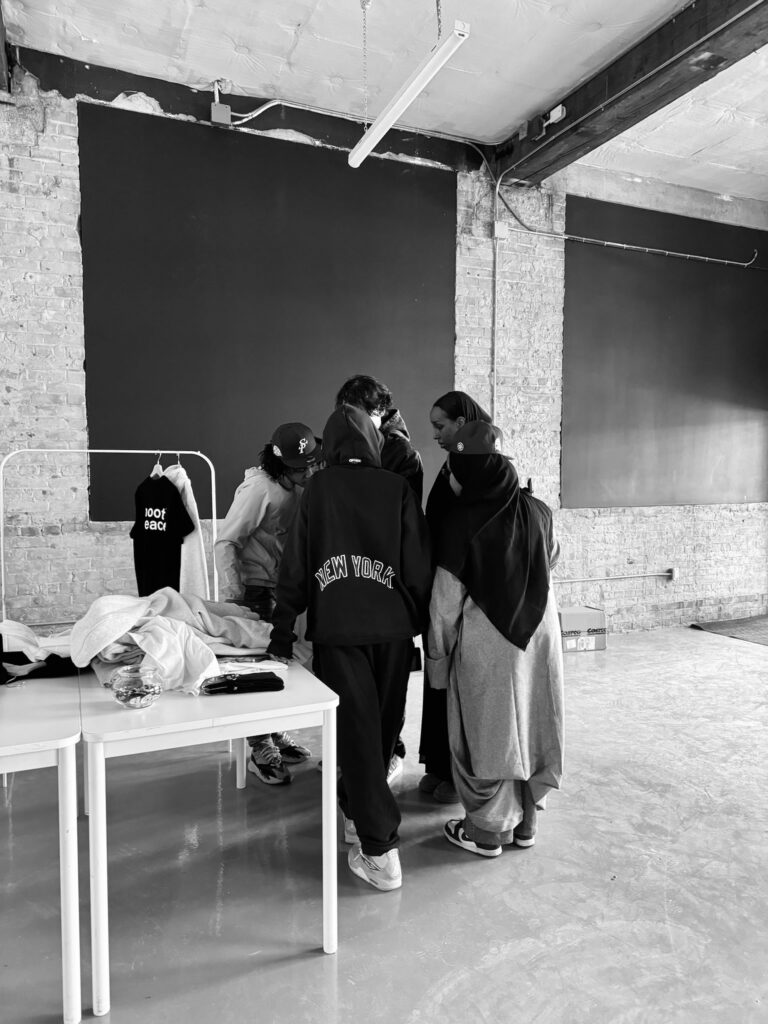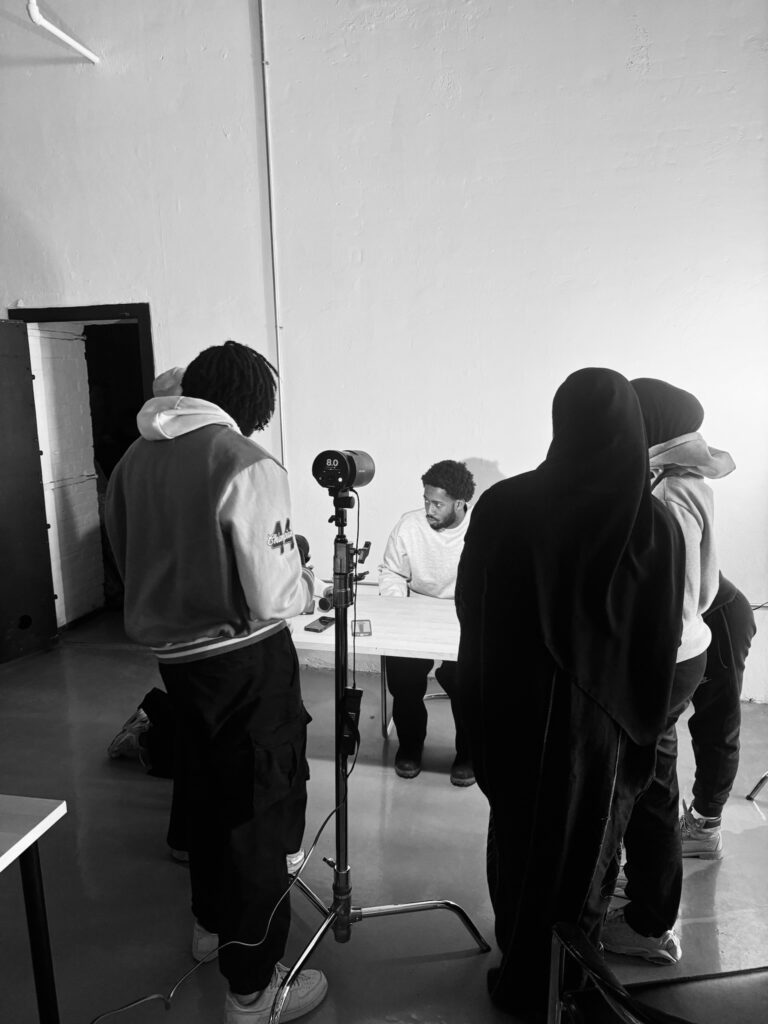How One Camera Sparked a Movement
How a Toronto-based photographer is using the power of storytelling to empower youth, transform communities, and challenge narratives through Shoot for Peace.
By Amina Daoud
Capturing More Than Just Photos
On a warm summer evening in Toronto’s Regent Park, the hum of conversation and laughter rises above the rhythmic thump of basketballs. Teenagers mill about the familiar court, but they’re not here to play a game—at least, not a traditional one. Instead, some crouch low to frame the golden-hour sunlight filtering between apartment towers. Others strike poses for portraits. Camera straps hang across their shoulders like extensions of their creativity. At the heart of the group stands Yasin Osman, the founder of Shoot for Peace, gently adjusting a student’s camera settings and nodding encouragement.
This isn’t just a photography workshop. It’s a meeting of minds and hearts, a space where art intersects with healing. What began with one borrowed camera has blossomed into a full-fledged grassroots movement. Shoot for Peace has become a sanctuary for youth—many of whom come from communities disproportionately impacted by gun violence, gentrification, and systemic inequities. Through photography, these young people are rewriting the narratives that so often define them from the outside.
Osman’s own journey into photography was grounded in personal memory and a longing for preservation. “I started taking photos with my mom’s cell phone of some of the buildings before they got demolished,” he recalls. “I would show my mom and say, ‘Look, I have a photo of the building before it got torn down.’ And she’d say, ‘Yeah, now you have a piece of the neighborhood. You’ve captured something that lasts forever.’ That was one of those ‘aha’ moments for me.”
In that moment, Osman realized that photography could be more than documentation. It could be resistance. It could be remembrance.
The Shoot for Peace studio transforms into a warm, welcoming space during a Ramadan iftar event open to the community. People from all walks of life gather to share food, stories, and connection.
March 16, 2025. (TMU J-SCHOOL/Amina Daoud)
The Birth of a Movement: Why Shoot for Peace?
The seeds of Shoot for Peace were sown not in a gallery or studio, but in the everyday environments of Osman’s life—his community, his classroom, and his own self-taught practice. As a preschool teacher, Osman often took pictures of children during playtime. “I was literally taking pictures of my classroom, just thinking, ‘I’m just taking photos of babies and little kids; it’s not that serious.’ But then the other teachers in the classroom were impressed with the photos I was taking.” Their praise encouraged him to explore further.
Initially drawn to cityscapes, Osman chased the grandeur of Toronto’s skyline and sleek architecture, crafting images that mirrored the work of popular Instagram photographers. But something didn’t sit right. “Compelling photography does not require exotic travel,” he realized. He felt the pull of his roots—the people and places he grew up with, the stories no one else seemed to be telling. He shifted his lens inward, turning toward his own neighborhood, toward the people behind the statistics.
The true origin of Shoot for Peace came during his evening walks through Regent Park. Osman would pause at construction sites and chat with neighbors reflecting on the past. “The sense of loss, of stories being paved over, stirred something in me,” he says. As waves of gentrification swept through Toronto’s oldest public housing community, Osman saw not just buildings disappearing, but legacies, cultures, and voices being erased.
“A big part of it was the gun violence happening in Regent Park and other neighborhoods when I was growing up,” he says. “I always felt a responsibility to my community. I wanted to be a mentor in the way that I wished I had growing up.”
What started as photography sessions in stairwells and community centers turned into a full-circle act of service: a photography-based mentorship program for youth, rooted in empathy, expression, and storytelling.
More Than a Camera: Mentorship Through Art
Inside the Shoot for Peace studio today, the vibe is unmistakably communal. A Bluetooth speaker plays soft hip-hop instrumentals while teens edit their shots. Laughter erupts from the back corner as one participant jokes with a mentor. Another pair quietly reviews portraits on a laptop screen, nodding in thoughtful critique. On the walls hang dozens of portraits from past cohorts—scenes of joy, grief, pride, and perseverance. These images are not only artistic expressions—they’re time capsules and testaments to lived experience.
“Another challenge was realizing that ‘Shoot for Peace’ wasn’t just about photography—it became a mentorship program,” Osman explains. “Youth started opening up about personal struggles: school, family issues, relationships with their parents. I’d be like, ‘Bro, we were supposed to be talking about lighting!’ But I realized photography was just a tool—it was about creating a safe space for them.”
For many of the youth who join the program, picking up a camera is a transformative experience. It’s not just about f-stops and composition—it’s about being seen. It’s about holding the power to frame your own perspective.
“A lot of these young people carry so much,” Osman says. “They might not have the words for it yet, but with a camera, they start to say something. And when they show that photo and someone else says, ‘That’s beautiful,’ they begin to believe it too.”
The mentorship extends beyond the technical. Alumni often return to the studio to mentor newer participants. This peer-to-peer model fosters confidence, leadership, and a genuine sense of community. “Some of our alumni are now working photographers, creative directors, or leaders in their own right,” says Aqsha Adam, Director of Programming. “But more importantly, they’re rooted in purpose.”
The Impact: Measuring Success Beyond the Lens
In one corner of the studio, a former participant-turned-instructor helps a group of youth curate their first photo exhibition. There are photos spread across a large table—portraits, landscapes, candid street scenes. The group huddles around poster boards, debating themes and titles. There’s a sense of ownership in the air, a confidence that wasn’t there when they first arrived.
“We’ve had youth who come in shy and hesitant, and by the end, they’re leading sessions,” Osman says. “They come for photography, but what they really find is community and belonging.”
For participants like Mohammed Tareki and Rudaina Abdulrahman, Shoot for Peace has been life-altering. Tareki, who once struggled to connect in school, now helps teach workshops. Abdulrahman has used her experience in the program to launch community storytelling projects focused on immigrant women. “Photography gave me a way to speak without fear,” she said in a recent community panel.
Adam sees this ripple effect every day. “The way I’ve seen it impact the community is by giving people an avenue to explore their experiences and identity. That’s incredibly powerful.”
Challenges and Adaptation: Growing a Grassroots Initiative
Osman isn’t shy about the challenges of building a community-led initiative. “When people told me about grants for $2,000, I thought, ‘What am I going to do with that? One camera costs that much.’ At first, we just had one camera, and everyone else used their phones. That was enough.”
In the early years, sessions often took place in borrowed spaces: stairwells, libraries, after-school rooms. The lighting was poor, the equipment minimal, but the stories were rich. Over time, word of mouth spread, and the program expanded. With the help of grants, community donors, and tireless hustle, Osman and his team were able to secure a permanent space.
“Every year, we’ve grown a bit,” he says. “We went from 5 youth to 20. From one neighborhood to across the city. Then we had alumni starting programs in the West End and Scarborough.”
And yet, Osman remains grounded. “I’ve learned to focus less on growth for the sake of growth. What matters most is staying rooted in our purpose.”
The Power of Storytelling in Shaping Futures
These days, Osman and his team are dreaming bigger. During a late-night planning session in the studio, surrounded by coffee cups and camera gear, he sketches ideas for a multi-generational creative hub. “I’d love to have a space where different generations come together: youth, parents, community members,” he muses. “A café, a gallery, a place where you can bring your grandma and your niece.”
His vision for the future doesn’t hinge on prestige or fame—it’s about sustainability and legacy. “Whatever we do, it has to come from the people we serve. We listen first, then build.”
Shoot for Peace continues to host workshops, exhibitions, and collaborative projects with other grassroots organizations. It’s not just about producing photographers—it’s about cultivating citizens who believe in their power to shape the world around them.
And as Osman looks at the framed images on the studio walls—photos taken by youth who once doubted themselves—it’s clear that this movement is about more than art. It’s about belonging. It’s about agency. It’s about reclaiming the narrative.
A Frame for the Future
In an age saturated with images, where attention spans are fleeting and algorithms dictate visibility, Shoot for Peace stands out by asking: what stories aren’t being told?
Through Yasin Osman’s lens, and now through the lenses of hundreds of young people across Toronto, photography becomes more than an art form—it’s a tool for healing, a declaration of identity, and a spark for social change.
One camera started this journey. Now, it’s a movement. And the story is still being written—one frame at a time.

